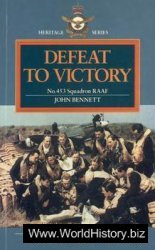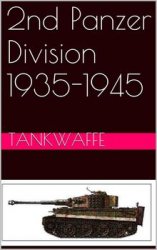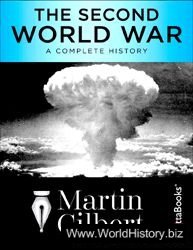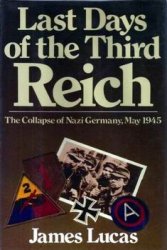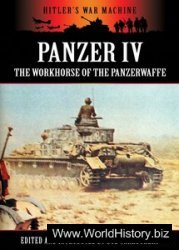GEOGRAPHY
Estonia borders Russia to the east and Latvia to the south; the Gulf of Finland forms the coastline in the north and the Baltic Sea and the Gulf of Riga lie to the west. The Gulf of Riga is separated from the Baltic Sea by Saaremaa and Hiiumaa, the two largest islands of the 1,500 that are part of the country. Estonia, along with Lithuania and Latvia, is part of the Baltic states. Estonia’s entire area is 17,462 square miles. Plains and some southern hills make up most of Estonia’s terrain. Forests cover about 50 percent of the land, and wetlands constitute another 20 percent. Lake Peipus in the east and Vortsjarv in the south are the two largest lakes. Principal rivers include the Parnu, the Narva (forming the Russian border), and the Emajogi.
INCEPTION AS A NATION
Starting in the 13th century C. E. the Esths and Livs suffered occupation by invading Danes and Germans. By 1346 Denmark had ceded territories to the Livonian Order of the Teutonic Knights, who possessed the Southern Territories or Livonia. Knights and merchants still occupied the region in the 17 th century, when northern Estonia fell under Swedish control, and Poland annexed southern Estonia. Sweden controlled all of Estonia by 1645. The Peace of Nystadt passed Estonia from Swedish hands to Russian in 1721.
During the Russian Revolution of 1917 Estonia declared itself an independent democratic republic. The Treaty of Tartu in 1920 established a peace between the Bolsheviks and Estonia; Estonia was free of Russian rule. By the following year Western powers recognized the new republic.
During World War II (1939-45) Soviet troops occupied Estonia, Latvia, and Lithuania; Estonia became the Estonian Soviet Socialist Republic, part of the Soviet Union (USSR). The Soviet Union broke up in 1991, enabling Estonia and the other Baltic states to declare independence. Russia and Estonia continued to dispute over territory, but this conflict was resolved in 1999 in a border treaty, reaffirming the Russian-Estonian frontier.
CULTURAL IDENTITY
A driving force behind the emergence of a modern Estonian cultural identity has been the relations of Estonians to foreign occupying powers. The first of these were Danes, whose state was more politically cohesive than the loose tribal associations of Estonians, and then the Germans, whose Hanseatic League developed trading centers along the Estonian coast. The the Germans, who were more “advanced” than Estonians in terms of trends current in the rest of Europe, dominated the country for centuries. Thus modern Estonians have developed their cultural identity in an atmosphere of struggle to remain independent and distinct.
Estonians have balanced a focus on their native culture, with its Finnic elements, and a desire to be “European” as against domination by Slavic Eastern Europe, particularly Russia. Estonian appreciation of European culture may derive from the country’s position on the Baltic Sea, which introduced influences from abroad, giving Estonians the international, cosmopolitan outlook of Scandinavians and other peoples along the Baltic Sea. After World War II more than half of Estonia’s writers went into exile to escape Soviet Russian hegemony, a circumstance that had a profound effect on Estonian cultural identity, perhaps arousing a conviction that under Soviet rule the only way to be Estonian was to live where one could express oneself freely In Estonia little poetry appeared under Stalin’s Socialist Realism, but new poets, adopting Western styles, appeared in the 1960s. Prose writing was equally influenced by movements current in Europe.
Centuries of German dominance have had their impact in Estonia. Early written Estonian is strongly Germanic, and the first known book in Estonian is a translation of the Lutheran catechism (1535). Lutheranism is still the majority
ESTONIANS;
NATIONALITY
Nation:
Estonia (Eesti); Esthonia; Republic of Estonia (Eesti Vabariik)
Derivation of name:
Germanic origin meaning "eastern way"; possibly a Baltic root meaning "speckled" or perhaps from the tribal name Aestii
Government:
Parliamentary republic
Capital:
Tallinn
Language:
Official language is Estonian, a Finnic language; Russian is widely spoken among the other native languages of ethnic minorities such as Latvian, Lithuanian, Ukrainian, and Finnish.
Religion:
Christians make up about 46 percent of the population, including Lutherans, Methodists, and Orthodox Christians; about 35 percent are nonreligious; Jews and Muslims also make up a small percentages.
Earlier inhabitants:
Esths; Livs
Demographics:
About 64 percent of the population are Estonian; Russians constitute about 30 percent of the population; other minorities include Latvians, Lithuanians, Ukrainians, Finns, and Belarusians.
Estonians: nationality time line
C. E.
1219 Danes occupy North Estonia.
1227 German crusaders from Riga invade Estonia.
1346 Danes sell northern Estonia to German Teutonic Order as result of native rebellions.
1400 Tallinn emerges as important center for commerce and culture.
1535 Lutheran catechism is translated into Estonian.
1558 Sweden seizes northern Estonia.
1629 Sweden controls all of Estonia, expelling Russians.
1686 New Testament is translated into southern Estonian.
1715 New Testament is translated into northern Estonian.
1721 Russia conquers Estonia.
1739 Anton Thor Helle combines two Estonian dialects based on northern Estonian in translation of Bible.
1816 Serfdom is abolished.
1822 Kristjan Jaak Peterson dies at age 21 after having begun Estonian literary tradition through his poems.
1838 Friedrich Reinhold Kreutzwald founds Estonian Learned Society to collect Estonian narrative folksongs, published as Kalevipoeg (Son of Kalev) in 1857-61.
1842 Estonian History Museum is founded in Tallinn.
1843 First Estonian novel, Luige Laus by Juhan Sommer, is published.
1870 Poet and playwright Lydia Koidula helps found Vanemuine Theatre in Tartu, beginning tradition of Estonian theatrical art.
1909 National Museum is founded in Tartu.
1918 Estonia proclaims independence from Russia and Germany.
National Library is founded in Tallinn.
1926-33 Tode ja oigus (Truth and justice), five-volume novel by Anton Hansen Tammsaare, is published.
1928 Art Museum of Estonia is founded in Tallinn.
1939-45 During World War II Estonia is incorporated into Soviet Union (USSR), then occupied by Nazi Germany.
1944 Estonia is again annexed by Soviet Union.
1991 Estonia declares independence from Soviet Union.
1994 Estonia joins Partnership for Peace.
2004 Estonia joins North Atlantic Treaty Organization (NATO) and European Union (EU).
Religion. Only by the 19th century did Estonians gain a full appreciation of their Finnic heritage, with the publication of the Kalevipoeg (1857-61; literally the son of Kalevi [or Kalev], translated as An Ancient Estonian Tale) by Friedrich Reinhold Kreutzwald, probably inspired by the compilation of Finnish epic poetry in the
Kalevala (see Finns: nationality). Like that work the Kalevipoeg is partly based on authentic tradition, incorporating hundreds of Estonian legends and folk tales, and in part is a creation of its compiler. it inspired the Romantic nationalistic movement soon to emerge.
An important Estonian literary tradition is lyric poetry. Though this genre includes variants of Finnish epic themes, it is more lyrical than Finnish folk poetry. More than a million pages of folk poems of several ethnic groups are preserved in the national archives at Tartu. As in Finnish folk poetry the standard meter of Estonian poetry is the trochaic four-foot line, with assonance, alliteration, repetition, and parallelism as important organizing principles. Folk songs are central to Estonian self-identity, as seen in the independence movement of the late 1980s, which was known as the singing Revolution because Estonians gathered in huge song festivals singing previously banned songs.
Estonians benefited from their geographic position as the country became the soviet Union’s commercial outlet to the West. This status gave Estonians the highest per capita income in the soviet Union, a high level of education, and frequent contact with Western institutions. When Estonians regained independence in 1991, they built quickly on these advantages to institute a free-market economy. The balancing act that the Estonians maintained for centuries between Eastern and Western Europe is greatly advantageous to them, now that Europe has made determined efforts to abandon the power politics of the past, giving small countries their rights to self-determination within the wider European Union.
Further Reading
John Hiden and Patrick Salmon. The Baltic Nations and Europe: Estonia, Latvia and Lithuania in the Twentieth Century (London: Longman, 1994). Walter R. iwaskiw, ed. Estonia, Latvia and Lithuania: Country Studies (Washington, D. C.: Library of Congress, 1997).
Anatol Lieven. The Baltic Revolution: Estonia, Latvia, Lithuania and the Path to Independence (New Haven, Conn.: Yale University Press, 1994).
Toivo Miljan. Historical Dictionary of Estonia (Lanham, Md.: Rowman & Littlefield, 2004). Toivo U. Raun. Estonia and the Estonians (Stanford, Calif.: Hoover Institution Press, 2002).
Graham Smith, ed. The Baltic States: The National Self-Determination of Estonia, Latvia and Lithuania (New York: St. Martin’s, 1996).
Rein Taagepera. Estonia: Return to Independence (Boulder, Colo.: Westview, 1993).




 World History
World History